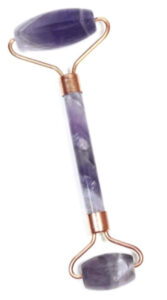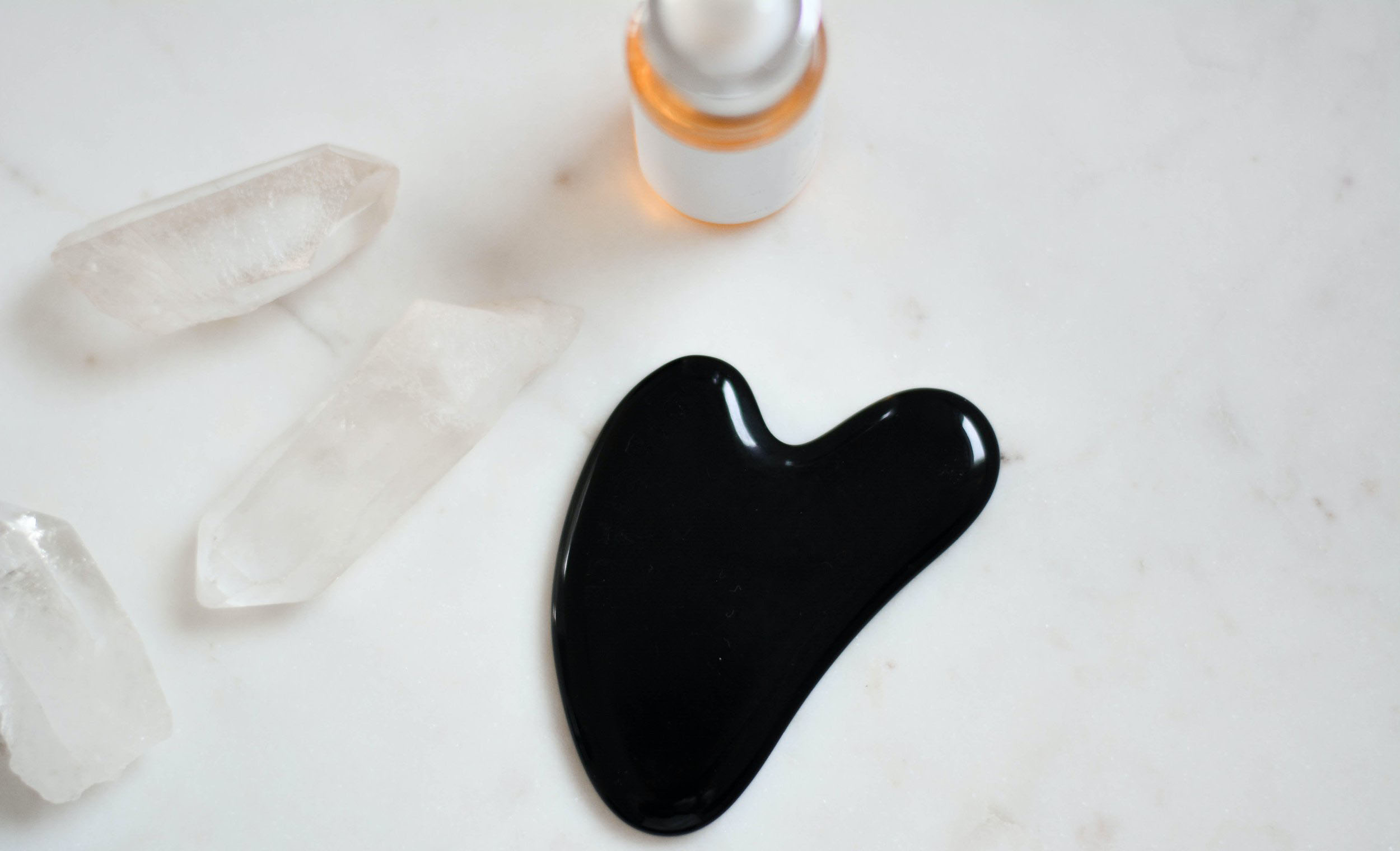Gua Sha originated in China during the Ming Dynasty and has its roots in traditional Chinese medicine. “Gua” translates as “to scrape,” and “Sha” translates as “disease, illness or sand” This refers to the small red dots that can appear on the body when firm pressure is applied and is an indication of disease, stagnation, and heat leaving the body.

Although the roots of Gua Sha are in east Asia, you can find people across the globe using it for many health conditions. The jade tool creates friction to eliminate internal stagnation and heat, both of which can result in many inflammatory conditions like muscular and joint pain, immune conditions, respiratory conditions, rashes, and more. Gua Sha supports the notion that friction boosts circulation, leading to better health.
Friction can also be applied strategically to the facial muscles at a much gentler pressure than is performed on the body to avoid leaving behind the petechiae or bruising that appears like red or purple sand on the skin.
Benefits of facial Gua Sha:
1. Promotes blood circulation
2. Improves fine lines and wrinkles
3. Promotes lymphatic drainage
4. Relieves tension and sore muscles
5. Reduces puffiness
6. Contours and sculpts the jawline and cheekbones
Reduces sinus pressure
7. Helps reduce acne flare-ups, redness, and the size of acne by moving congestion and improving circulation
Should you DIY or get a pro treatment?

I recently completed a full course on Gua Sha for professionals by Wildling Beauty founder, Britta Plug. There are many free tutorial videos all over the internet, but I’m glad I sprung for the full professional training. During the training, I was surprised to learn a lot of those free videos on the internet were showing people incorrect moves—everything from the angle of the tool, the type of tool, the pressure, and the movements being used. Done incorrectly it can be uncomfortable, pose a risk for injury or just not work. Many tutorials also fail to mention lymph and lymph drainage, which is central to Gua. A facial from someone who has received professional focused training will likely be much more customized, targeted, and intentional. The effects of this therapy combined with professional products, and esthetics service is downright amazing, in my opinion. However, I think there are significant benefits to performing Gua Sha on your own as a regular practice at home, but make sure you get professional advice on what tool to use and how to use it and, of course, whether or not you are a good candidate for the treatment.
Risks and precautions to consider.
You’ll probably want to avoid this type of therapy if you have had or are having issues with or are taking medications for blood clots.
Fresh botox and fillers? Wait until these are close to wearing off before having a Gua Sha treatment. The therapy can move around new filler or botox, which you don’t want.
Never use the tool over broken skin or open skin lesions.
While Gua Sha can help with sinus pressure and drainage, if you have an active sinus infection or are currently sick, wait until you are recovered before experiencing Gua Sha. The movements can move a lot of stagnated fluid around, and if you are sick, it may make you feel worse.
Be sure to stay hydrated before and after a treatment to help your body flush out and remove toxins and stagnant fluids stirred during the treatment.
For more information on Gua Sha, whether tools, accompanying products, treatments, or at-home practice, just drop us a line! We’d be happy to help you learn more about this amazing natural practice that promotes both health and beauty—By Pam Edmondson
